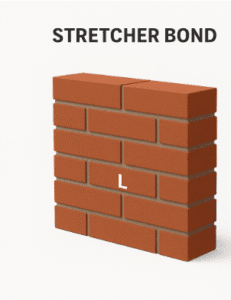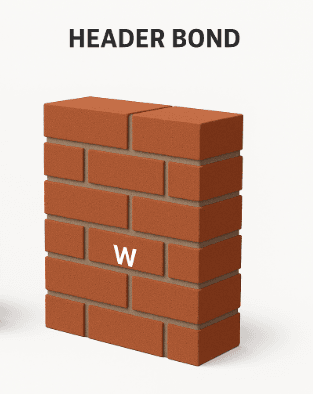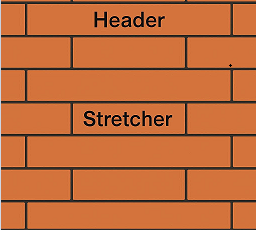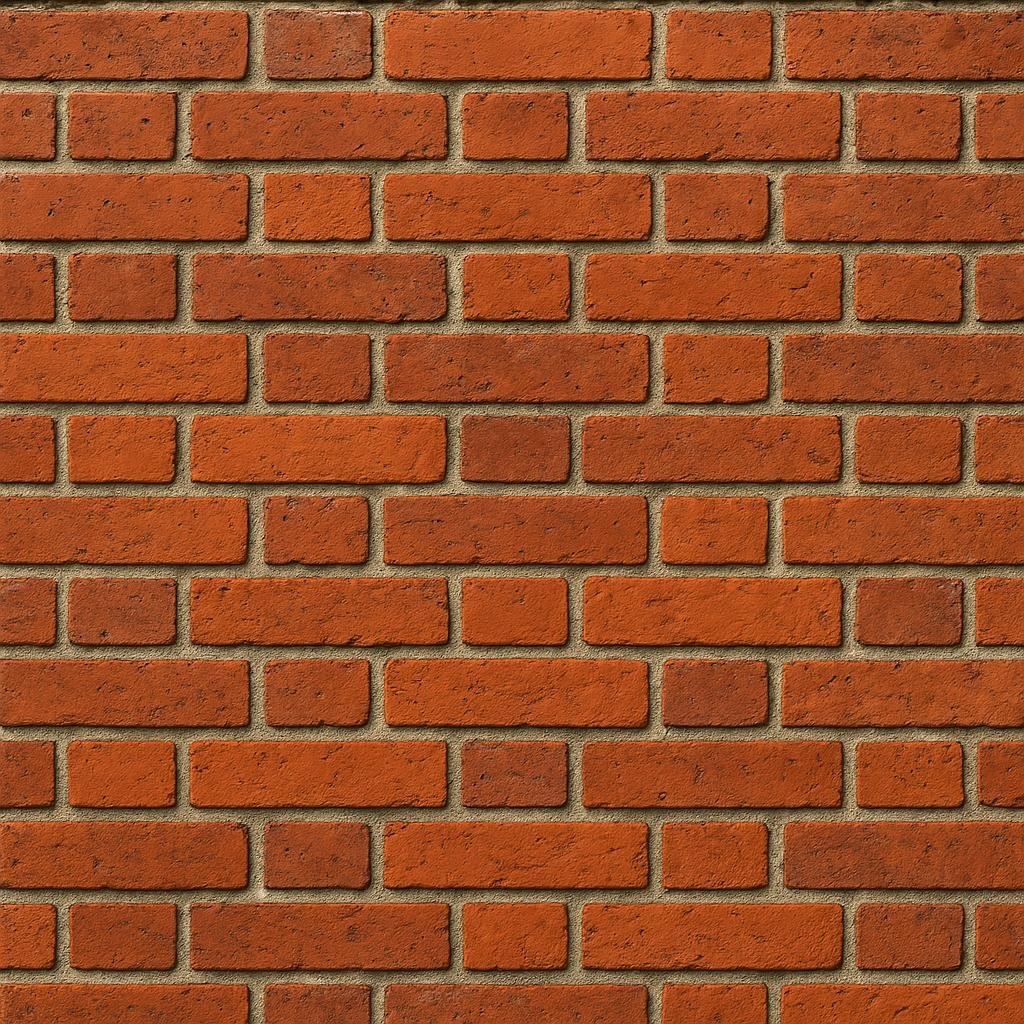Brick bonds refer to the arrangement of bricks in masonry construction. The choice of bond affects not only the strength and stability of the wall but also its appearance.
Below are the most common types of brick bonds, along with their uses, strengths, and illustrations.
Stretcher Bond
- Description: Bricks are laid with only their longer face (stretcher) visible.
- Use: Common in half-brick thick partition walls.
- Strength: Weak in load-bearing; mainly decorative.

Header Bond
- Description: Bricks are laid with their shorter face (header) visible.
- Use: Best for one-brick thick walls and curved walls.
- Strength: Stronger than stretcher bond.

English Bond
- Description: Alternating courses of headers and stretchers.
- Use: Standard in load-bearing walls.
- Strength: One of the strongest and most durable bonds.

Stack Bond
- Description: Bricks are stacked directly above each other (no overlap).
- Use: Decorative walls, veneer finishes.
- Strength: Very weak; requires reinforcement.
Double Flemish Bond
- Description: Each course has alternate headers and stretchers.
- Use: Combines strength with visual appeal.
- Strength: Weaker than English bond but more aesthetic.

Single Flemish Bond
- Description: Flemish bond on the front face, English bond at the back.
- Use: When appearance matters only on one side.
- Strength: Provides a balance of strength + aesthetics.
English Cross Bond
- Description: Similar to English bond but headers in alternate courses are vertically aligned.
- Use: Slightly more decorative variation of English bond.
- Strength: Comparable to English bond.
Zig-Zag Bond
- Description: Bricks are laid in a zig-zag pattern.
- Use: Mostly for pavements and flooring.
- Strength: Not suitable for structural walls.
Garden Wall Bond
- Types:
- English Garden Wall Bond: 3 stretchers to 1 header.
- Flemish Garden Wall Bond: 3 stretchers between every header.
- Use: Popular in garden and boundary walls.
- Strength: Sufficient for non-load-bearing purposes.
Raking Bond
- Description: Bricks are laid diagonally (raked) in the interior of thick walls.
- Use: Prevents continuous vertical joints.
- Strength: Improves wall stability and bonding.
Comparison Table
| Bond Type | Strength | Common Use | Appearance |
|---|---|---|---|
| Stretcher Bond | Weak | Partition walls | Simple |
| Header Bond | Moderate | Thick/curved walls | Plain |
| English Bond | Very Strong | Load-bearing walls | Basic but durable |
| Double Flemish Bond | Moderate | Decorative walls | Attractive |
| Single Flemish Bond | Strong + Decorative | Exposed + hidden walls | Balanced |
| Stack Bond | Very Weak | Veneer walls | Modern look |
| English Cross Bond | Strong | Load-bearing | Decorative variation |
| Zig-Zag Bond | Weak | Paving, flooring | Decorative |
| Garden Wall Bond | Moderate | Boundary/garden walls | Decorative |
| Raking Bond | Strong (internal) | Thick walls | Not visible externally |
Conclusion
Choosing the right bond depends on wall thickness, load requirements, and aesthetics.
- For strength → English Bond.
- For appearance → Flemish Bond.
- For decorative purposes → Stack, Zig-Zag, or Garden Wall Bonds.

Leave a Reply